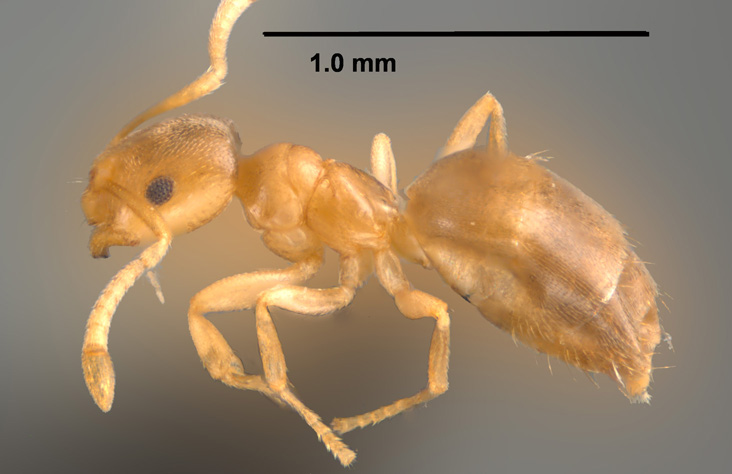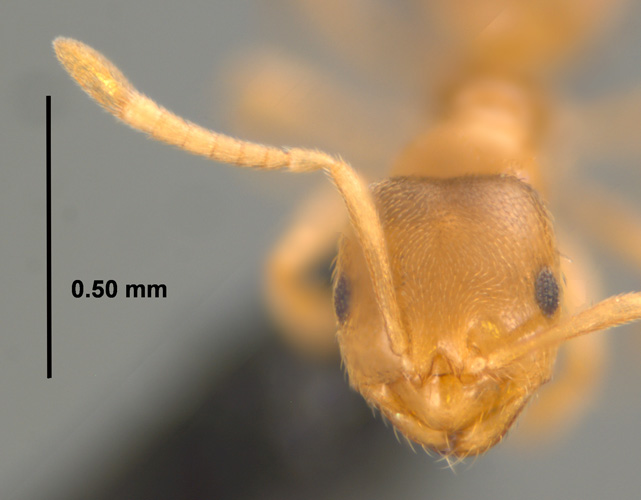Subfamily FORMICINAE by Joe A. MacGown, uploaded 3 November 2009, last updated on 14 July 2015 |
||
 |
||
Brachymyrmex depilis, frontal view of head of a worker (photo by Joe A. MacGown) |
Brachymyrmex depilis, side view of a worker (photo by Joe A. MacGown) |
|
Brachymyrmex depilis, full face view of the head of a worker (Photo by James Lewis and Joe A. MacGown) |
Brachymyrmex depilis, profile view of the head of a worker (Photo by James Lewis and Joe A. MacGown) |
Brachymyrmex depilis, dorsal view of the head of a worker (Photo by James Lewis and Joe A. MacGown) |
Brachymyrmex depilis, full face view of the head of a queen (Photo by James Lewis and Joe A. MacGown) |
Brachymyrmex depilis, profile view of the head of a queen (Photo by James Lewis and Joe A. MacGown) |
Brachymyrmex depilis, dorsal view of the head of a queen (Photo by James Lewis and Joe A. MacGown) |
Introduction Taxonomic History (provided by Barry Bolton, 2013) Brachymyrmex heeri subsp. depilis Emery, 1893: 635 (w.q.) U.S.A. Nearctic. Wheeler & Wheeler, 1953: 139 (l.). Raised to species: Santschi, 1923: 663. Senior synonym of Brachymyrmex nanellus: Creighton, 1950: 359; of Brachymyrmex flavescens: Cole, 1953: 266. Identification Brachymyrmex depilis is distinguished from other species in the group in this region by its lack of erect hairs (only a few on the edges of the gastral tergites) and relatively large eye. An undescribed species known only from FL is similar in that it lacks erect hairs, but the eye is much smaller with only 3-4 facets in the greatest diameter of the eye. Other yellow species known from the U.S., including a new species that has been collected from southern AL and MS, differ in that they have semi-erect hairs present on the promesonotum. Other species of Brachymyrmex known from this region are dark brown. Biology and Economic Importance Distribution Literature Cited Creighton, W. S. 1950. The ants of North America. Bulletin of the Museum of Comparative Zoology 104:1-585. Cole, A. C., Jr. 1953g. Studies of New Mexico ants. V. The genus Pheidole with synonymy (Hymenoptera: Formicidae). Journal of the Tennessee Academy of Science 28:297-299. Emery, C. 189. Beiträge zur Kenntniss der nordamerikanischen Ameisenfauna. Zoologische Jahrbücher. Abteilung für Systematik, Geographie und Biologie der Tiere 7:633-682. Santschi, F. 1923. Revue des fourmis du genre Brachymyrmex Mayr. Anales del Museo Nacional de Historia Natural de Buenos Aires 31:650-678. Wheeler, G. C.; Wheeler, J. 1953. The ant larvae of the subfamily Formicinae. Annals of the Entomological Society of America 46:126-171. Links |
||









